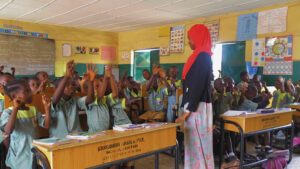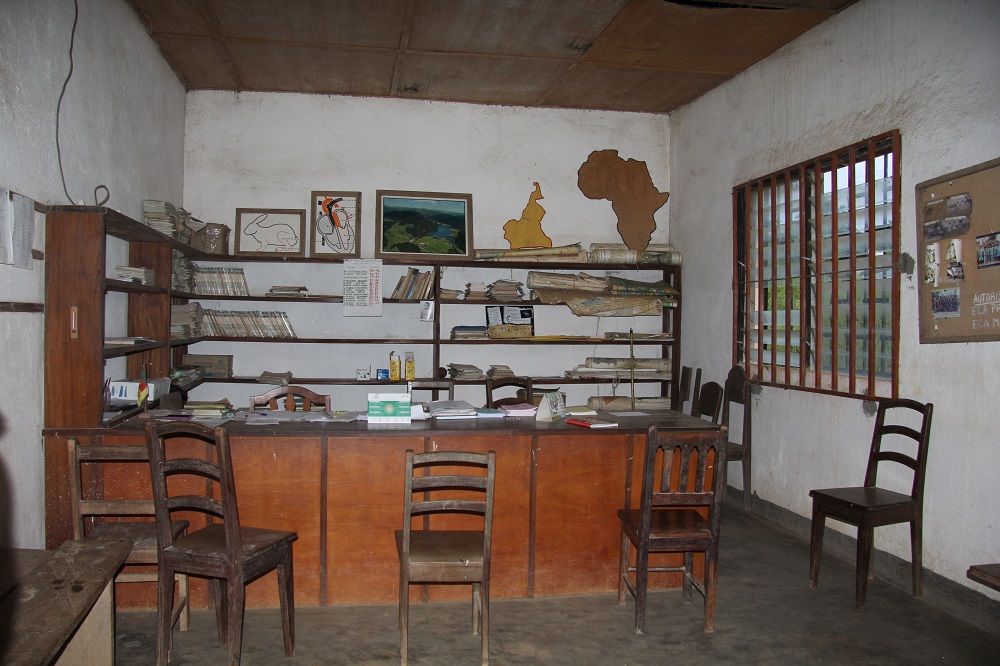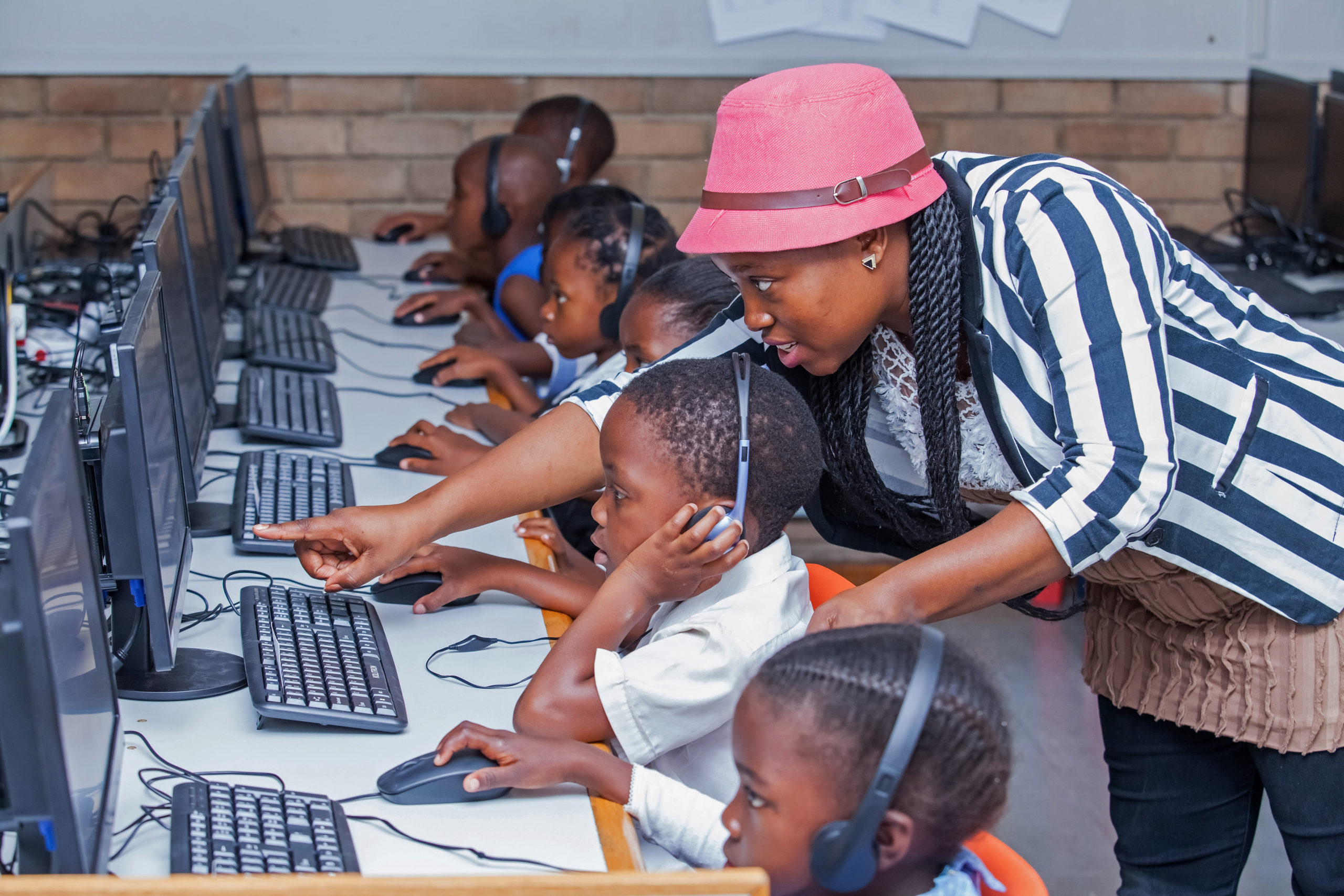The Sub-Saharan Africa region faces a severe educational crisis: of the more than 244 million children not enrolled in school worldwide, 30% are in Sub-Saharan Africa, according to UNESCO data. This amounts to more than 72 million. Among those who do attend school, dropout rates are alarmingly high. According to the World Bank, 20% of students aged 12 to 14 drop out of school, a figure that rises to 40% in the 15 to 18 age group.

The quality of education is another major concern in this subcontinent. Many schools lack basic resources, such as textbooks and trained teachers. This lack of resources is reflected in low academic performance levels: only 10% of children who complete primary school in the region have minimal skills in reading and mathematics. Let’s zoom in on the data by country. According to recent measurements from UNESCO’s MILO project, which has measured learning outcomes in six African countries before, during, and after the pandemic, in 2021, the proportion of students who achieved minimum performance levels in reading was 0.1% in Burundi, 2.3% in Zambia, 9% in Burkina Faso, 10.8% in Ivory Coast, 13% in Senegal, and 46.7% in Kenya. In mathematics, the data improves slightly, ranging from 2.1% in Zambia to 74.1% in Kenya. In between, we have 8.9% in Ivory Coast, 13.5% in Burundi, 23.7% in Burkina Faso, and 34% in Senegal.
Next, we will discuss why it is so important to place equity at the center of educational policies and how to improve equity in education.
Why Should Equity Be at the Heart of Educational Policies in Africa?
To begin understanding why equity should be at the heart of any educational policy, we must first look at its definition. Equity, which is not the same as equality, is about creating conditions that favor equal opportunities for everyone to integrate into society on an equal footing. Now that we know what it is, let’s try to answer the question.
- Equity Ensures Access to Education for All on Equal Terms. Equity in education is crucial because it ensures that all children have access to quality education, regardless of their socioeconomic background, gender, disability, or geographic location. Without equity, existing large inequalities can widen. Policies that ignore equity tend to perpetuate existing inequalities and can increase the educational gap between different social groups.
- Equity in Education Ensures Significant Returns. Placing equity at the center of educational policies can yield significant returns in both the short and long term. In the short term, it improves educational outcomes by providing disadvantaged children with the tools and support they need to reach their academic potential. In the long term, it contributes to more equitable economic growth and poverty reduction by ensuring that a larger proportion of the population has access to quality educational opportunities that enable them to improve their living conditions.
- Equity Is Essential for Inclusive Education. Equitable policies are essential to address the needs of marginalized groups, such as children with disabilities, those affected by conflicts, and those living in extreme poverty. These populations, who are most likely to be excluded from the education system, are also those who can benefit the most from quality education, which not only improves their learning outcomes but also their social integration and overall long-term well-being.
- Equity Provides Social and Economic Stability. Equity in education is also related to social and economic stability. An equitable education system contributes to greater social cohesion by ensuring that all segments of society have the opportunity to improve their situation. This is crucial in a continent like Africa, where social and economic inequalities can lead to tensions and conflicts.
Equity, which is not the same as equality, is about creating conditions that favor equal opportunities for everyone to integrate into society on an equal footing.
How Can We Improve Educational Equity in Sub-Saharan Africa?
From the UNESCO and African Union report, we can extract some recommendations to improve equity in education. We summarize them below.
- Increase Funding: According to UNESCO, African countries would need an additional $77 billion annually to achieve their national education goals and provide quality education for all. However, despite this need, development aid for education in Sub-Saharan Africa has decreased by 23% in the last recorded year. Increasing public funding and seeking innovative sources of private funding is essential if we want to improve educational equity. Adequate financial resources allow for the implementation of programs and policies that favor the most disadvantaged students and ensure an equitable distribution of resources. For example, in Uganda, the implementation of the Universal Primary Education (UPE) policy in 1997 resulted in a significant increase in school enrollment, from 2.5 million students in 1996 to 8.7 million in 2013. This was made possible by increased government funding for education. In Ghana, an investment in education of 6% of GDP in 2015 allowed for improvements in school infrastructure and access to educational resources, benefiting especially rural and less developed areas.
- Implement Reforms to Ensure Quality Education: Implementing curricular and pedagogical reforms that ensure quality education for all (teacher training, development of appropriate educational materials, creation of inclusive learning environments…) will result in greater equity. Examples include Kenya’s Tusome Early Grade Reading program, which has significantly improved primary students’ reading skills through teacher training and the provision of high-quality reading materials, or the curricular reforms and teacher training in South Africa that have improved learning outcomes in mathematics and science, as reflected in international assessments such as TIMSS, where South Africa showed remarkable progress between 2003 and 2015.
- Strengthening Information Systems: What is not measured cannot be improved. Therefore, modernizing Education Management Information Systems (EMIS) to efficiently collect and use relevant data is essential for monitoring and addressing inequalities. For example, in Nigeria, the implementation of an improved EMIS has allowed for better data collection and analysis, leading to more effective interventions in areas with low school enrollment rates.
- Inclusion of ICT in Education: Integrating Information and Communication Technologies (ICT) can improve pedagogy and information management, making education more accessible and effective for all students. Integrating technology into classrooms can enhance learning quality, as demonstrated in Uganda, where a study showed that students using digital learning platforms perform 20% better compared to those who do not use them. It can also improve the motivation of students and teachers, as seen in Angola, or teacher training, as in the Train for Tomorrow program in Ghana, which provides ICT training for teachers, improving their digital skills and ability to integrate technology into teaching. Additionally, technology plays a crucial role in reducing inequalities and gaps by providing access to high-quality educational materials to disadvantaged environments and groups, as seen in Tanzania, where access to digital educational resources has helped close the gender gap in education with specific programs focused on providing girls with access to technology, fostering equal opportunities.
African countries would need an additional $77 billion annually to achieve their national education goals and provide quality education for all.
In recent decades, notable progress has been made in access to education in Africa, and countries continue to commit to improving access for all children to quality education. Despite these advances and commitments, the situation remains significantly improvable. According to UNICEF, by mid-century, Africa will have one billion children under the age of 18. This demographic dividend is a powerful source of growth and progress not only for the African continent but for a world where the population of Western nations is rapidly aging. Education, as always, is the key.






